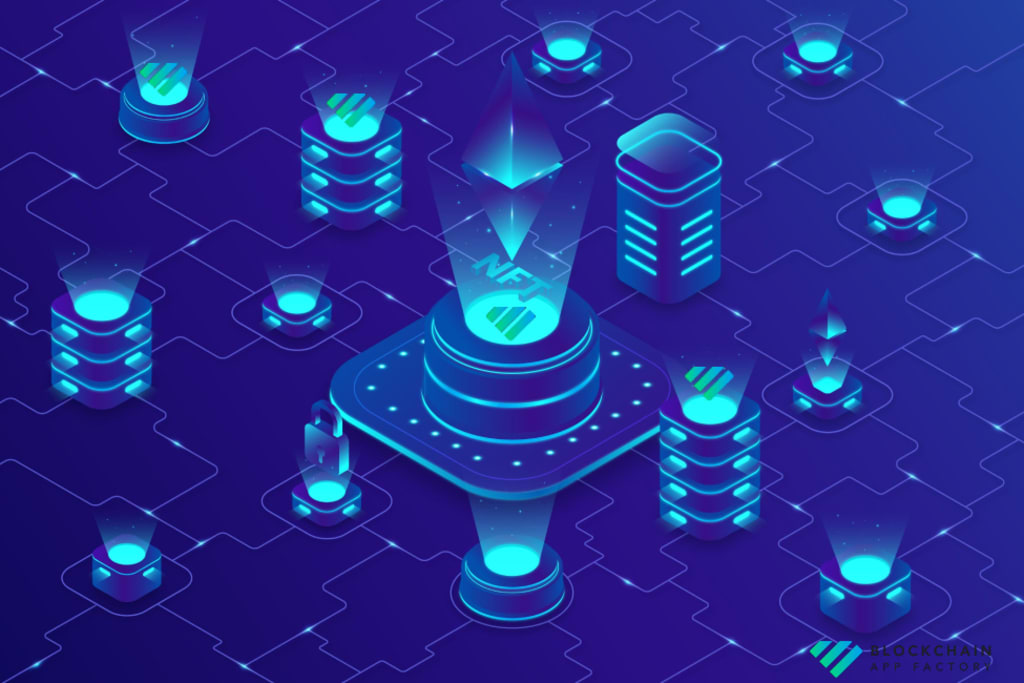Building an NFT Marketplace – Points That Shouldn’t Be Missed
NFT Marketplace Development Solutions

Since non-fungible tokens (NFTs) first appeared around 2014, there has been a lot of buzz about these virtual tokens. Yet, it was not until 2017 that the concept gained momentum with the development of the legendary CryptoKitties and CryptoPunks. But, no one expected the latter part of 2021 to be of such a party for NFTs as some of the NFT-backed assets sold for millions of dollars worth of cryptocurrency. While most of the wider crypto community members cited popular NFT creators and celebrities for the boom, an unsaid role has been played by NFT marketplaces in facilitating every NFT transaction since their inception. A business based on an NFT marketplace would be a viable option for someone who does not want to create/hold NFTs yet wants to make use of these virtual tokens. In this blog, we will look into detail at NFT marketplaces and more stuff related to those platforms.
An Introduction to NFT Marketplaces
An NFT marketplace is a platform where assets backed by non-fungible tokes can be traded in exchange for cryptocurrencies. Some NFT marketplace ventures have started accepting the newer crypto stable coins, debit/credit cards, and wire transfers for payments as a move to widen their customer base. NFT marketplace platforms can be themeless or theme-based, with both having equal importance in the NFT world. Popular NFT marketplaces include OpenSea, Rarible, Solsea, LooksRare, WazirX, Axie Infinity, SuperRare, NBA Top Shot, Sorare, and Jump.trade. According to The Block website, the trading volume of popular NFT marketplaces during March 2022 alone amounted to an astonishing $6.4 billion worth of cryptocurrency.
The Workflow of an NFT Marketplace
- First, a user (buyer/seller) creates their account on the NFT marketplace platform.
- Then, they need to link their existing crypto wallet or fill some amount of cryptocurrency on the built-in wallet that comes with the portal.
- If a seller, one should mint the NFTs that back their assets. They should give a detailed description, the initial/fixed price, and other relevant details.
- After minting the NFTs, the seller should list the NFTs on the marketplace platform, where they would need to fill in some details requested by the portal.
- After moderation and verification from the administrator of the NFT marketplace, the NFT assets can now be put up for sale. Selling NFTs is possible in three different ways – Timed auction, timeless auction, and fixed-price sale.
- Now, a buyer can place bids on the NFT assets at auction or buy the NFTs directly for a fixed price.
- As soon as the NFT’s smart contract gets executed, the NFTs are transferred to the buyer’s wallet, and the funds are sent to the seller’s crypto wallet.
- An NFT marketplace might collect transaction fees as a percentage of the trading amount, for running their business, in addition to the gas fee incurred by the blockchain network on which the platform is hosted.
Salient Features of an NFT Marketplace Platform
- Shopping Cart – In an NFT marketplace, a shopping cart can be used by a buyer to purchase and check out NFT items easily, just like any e-commerce website.
- Search and Filters – Search and filter engines in an NFT marketplace are necessary to make the users feel at ease when they want to search for a specific NFT product. Make sure to integrate both options under the same system so that the users have a seamless experience.
- Multiple Payment Methods – In an NFT marketplace, integrating various payment gateways has become a major feature since such a move can attract the general public to participate in the NFT world actively.
- Separate Panels – It is essential to have individual panels for sellers, buyers, and admins as they have different needs and need to access different sets of information. Also, ensure that these panels cannot be breached while offering a great user experience.
- Listing Status – For a seller in an NFT marketplace platform, a portal showing the status of their listings is necessary so that they can have live updates on their listed NFTs and products sent for moderation.
- Bidding Portal – A portal for auctions is a must in an NFT marketplace since most sellers opt to auction their NFT items. The portal should be in an easy-to-operate manner so that buyers and sellers can have a seamless experience.
- Instant Alerts – For any NFT marketplace to be in constant touch with its users, it is necessary to embed notifications through various means such as mobile and email alerts.
- Ratings and Reviews – In an NFT marketplace platform, allowing ratings and reviews to be posted helps buyers to learn more about the NFT items of their interest. Such options also make it possible for good projects to get recognized.
Point-wise Guide for Building an NFT Marketplace
- Before anything else, be clear with the background of the NFT marketplace platform. Frame the business plans, the technologies to be employed, and the niche your business will be based. Frame the whitepaper based on the goals, as it can be massively helpful in case you need funds at any stage of the project.
- After that, go with working on the front-end features of the platform. Develop user interface (UI), and user experience (UX) features using necessary frameworks, as efforts here can result in generating a seamless experience for the end-users.
- Then, continue the progress by performing back-end development that has a great role in deciding the security and robustness of the platform. The work here is essential since the crypto world sees these features as paramount in realizing the crypto dream successfully.
- Afterward, get along with testing the platform for bugs, errors, and defects and resolve them at the earliest. Perform repetitive testing with different test cases until all anomalies are resolved.
- Then, deploy it on your server and launch the platform for initial public use. Work on feedback received and release frequent updates to be up-to-date and ensure customer satisfaction.
Summarizing Thoughts
Hence, we can safely say that a venture based on an NFT marketplace can stay in the crypto world for a long time if all the points given above are executed without fail. An NFT marketplace is always a cashable business option, and it cannot be more ideal to begin your business when the NFT boom still exists.
About the Creator
Linda John
Cryptocurrency Development |
Crypto Wallet Development | Crypto Payment Gateway Development | Crypto MLM Software Development | NFT Development Company






Comments
There are no comments for this story
Be the first to respond and start the conversation.